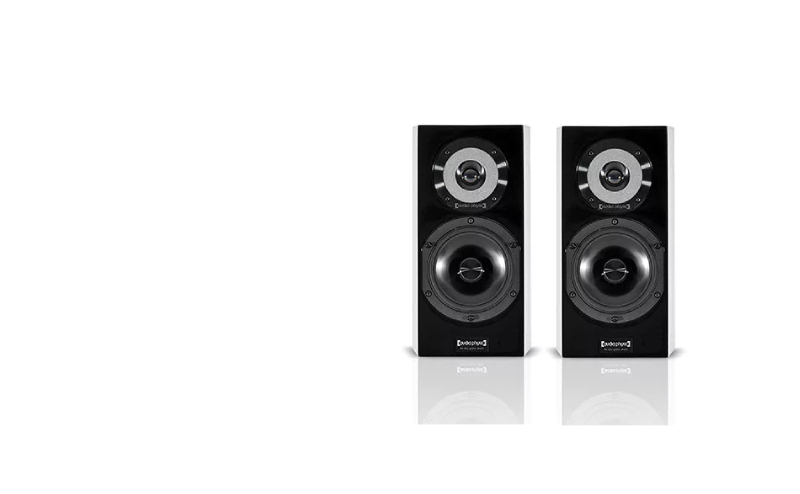
German Audio Physic has been around for almost four decades and for their thirty-fifth anniversary, they have introduced a series of loudspeakers with a simple additional designation 35. One of these is the tiny bookshelf model Step 35, which has long formed the basis of the top Reference series (that is, its version without the thirty-five at the end). In fact, the Step model in various variations has been on the market since the brand was founded.
Step 35 belongs to the category of rather small loudspeakers, their almost seven-kilogram enclosures have a height of 32 cm, which is quite standard, but they only have a width of 17.5 cm and a depth of a fairly common 25 cm, however, they are "tilted back" and thus their dimensions appear smaller.
The speakers are typical for their shape and construction elements. The front and back panels are thus beveled and flat, the sides slightly curved. The quality of workmanship is excellent, the wood with exemplary surface lacquer combines the spirit of traditional luxury with modern purity, emphasized by a mix of edges and curves. Material-wise and purely carpentry-wise, Step 35 is at a really nice level.
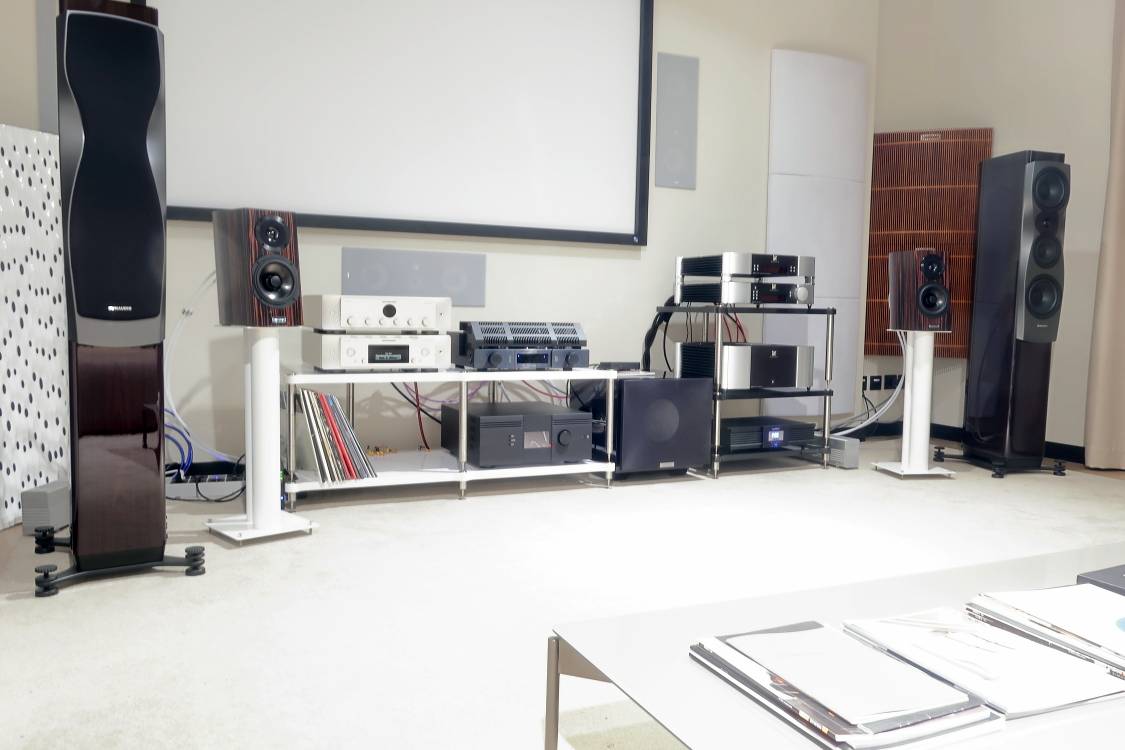
Just barely two converters fit in the front to maintain the narrowest possible profile, it even has a vertically cut side basket for the mid-bass. What's interesting is the surface mounting of both speakers, i.e., their plate and basket are not recessed into the plane with the board – it gives a slightly technical but nice impression. Moreover, this is not a coincidence, but a technical intention, as we will discuss further.
The back side of it, given its dimensions, also doesn't hold much – there is only a metal plate from which one pair of terminals protrudes and a little lower, a bass reflex port with a gradually widening outlet. It is a sturdy smooth plastic casting.
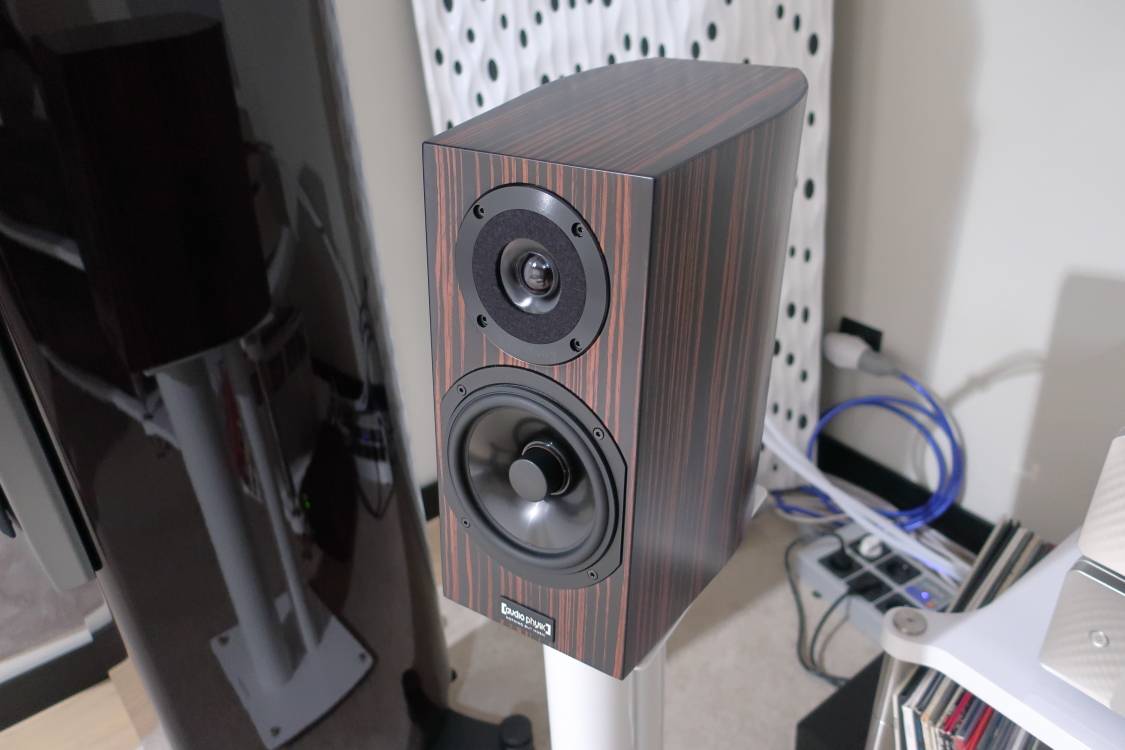
Audio Physic prides itself on being among the companies that apply many technologies and go to really small construction details in their designs. For example, they address the "suspension" of the speaker terminals. The mentioned mounting metal plate is separated from the rest of the cabinet by a flexible layer of neoprene. Or take the internal braces, which are realized using ceramic foam, a porous material that contains 85% air and is still stronger than MDF boards. This allows for the use of smaller enclosures than would be necessary for the same strength in the case of traditional wooden ribs.
However, the used speakers are crucial. Let's start with the tweeter. It is the HHCT III (Hyper Holographic Cone Tweeter 3rd generation), whose design revolves around maximum suppression of unwanted vibrations and reflections. Therefore, its chassis is not recessed, allowing it to be separated by a flexible layer from the cabinet itself and the mid-bass. Thus, it has a central dome surrounded by a conical waveguide and significant felt damping. The manufacturer states a non-standard diameter of 4.5 cm, but it will probably be a value that also takes into account the mentioned waveguide.
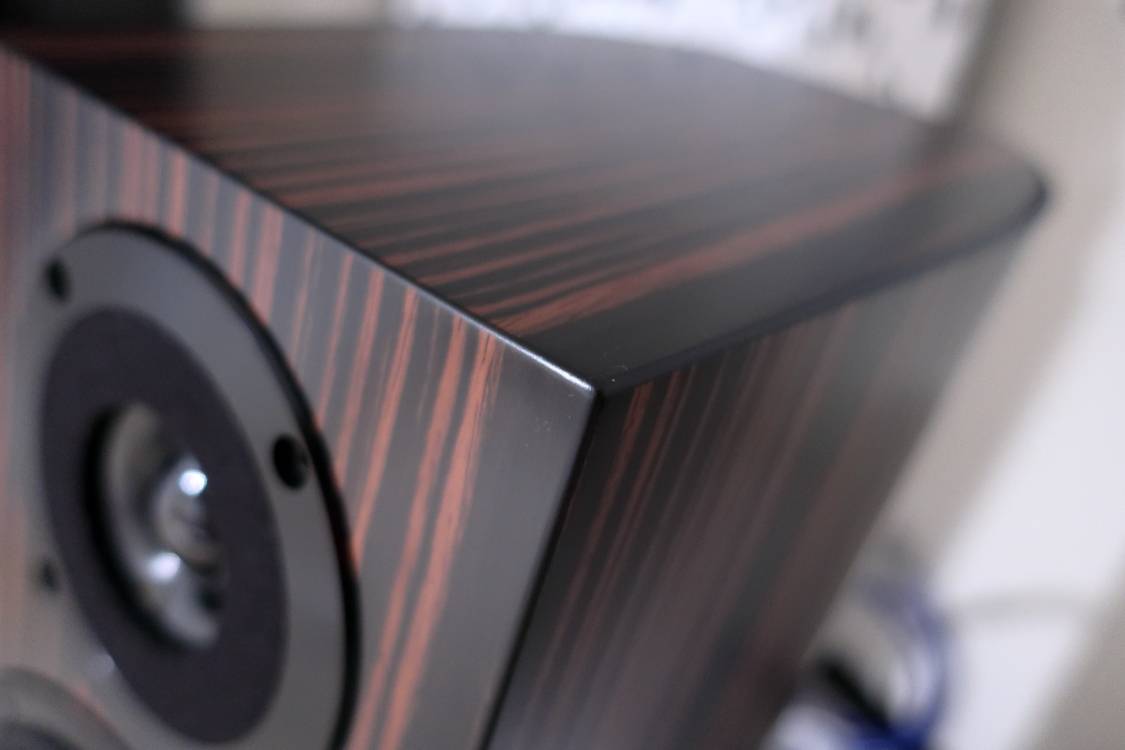
The second speaker is HHCM III (replace the above-mentioned name Tweeter with Midrange). Just like the aforementioned tweeter, the diaphragm here is primarily aluminum, but is coated with a ceramic layer on the surface and is also damped by a pre-tensioning element on the inner side. This is intended to prevent the formation of resonances and echoes in both transducers. The mid-bass diaphragm has a diameter of 15 cm and features a large, prominent aluminum phase plug of a specific shape in the center. The transducer also has a basket that separates it from the enclosure – this time using a double basket technology, where the inner part made of anti-vibration synthetic material holds the stressed moving parts, and the outer rigid part is mounted to the enclosure. The two supporting structures are in mutual contact only through a narrow damping ring.
As can be seen, a lot of complex and thoughtful technology has been invested in the construction of such small speaker systems. The manufacturer then states a frequency response of 50 – 40,000 Hz (without tolerance band), sensitivity of 87 dB, and an impedance of 8 ohms, again both without explanatory conditions.
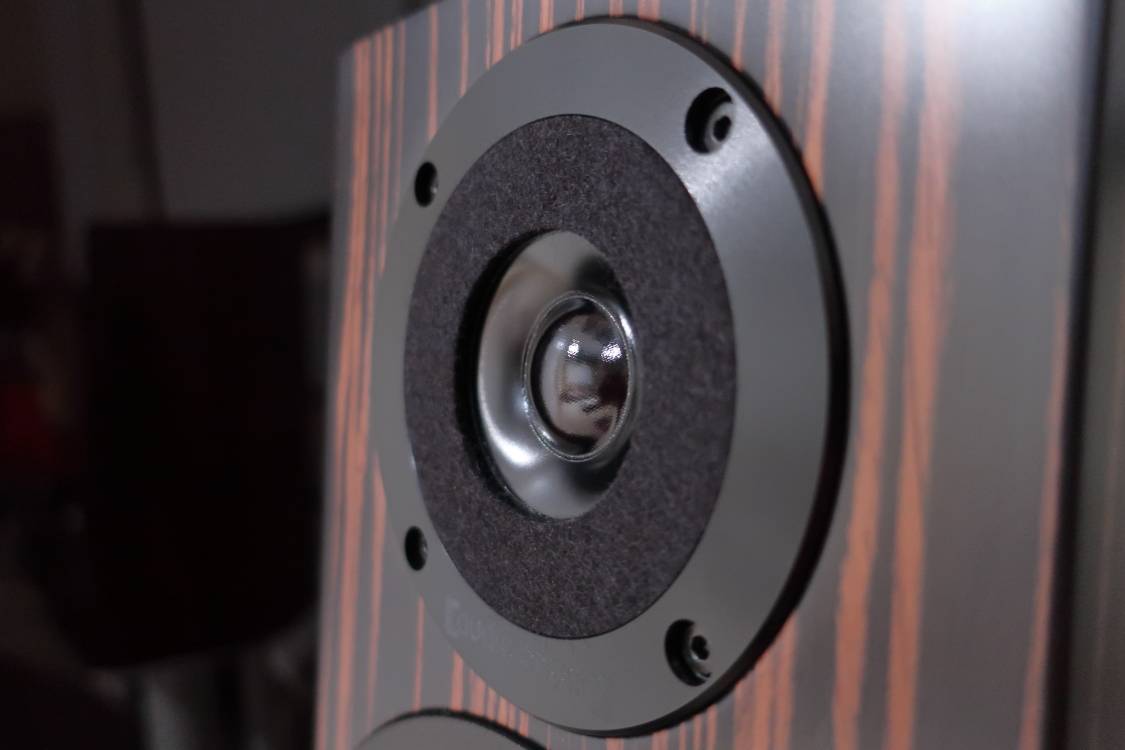
Step 35 we listened to in the Prague showroom of the importer, which is indeed a bit larger than such speakers would deserve. They were placed on standard height stands. The music was played through Marantz MODEL 30, Octave V 110 SE (which really suited them) and Naim Supernait 3, with Marantz SACD 30n as the signal source. The electronics were powered by filters IsoTek EVO3 Sigmas and EVO3 Titan One. It was connected with Nordost cabling (from Red Dawn through Heimdall 2 to Valhalla 2) and Chord Cable Co. We could compare with Dynaudio Confidende 30i and Focal Aria 936 K2.
In the deep, dense organ positions in Bach's "Toccata BWV 565" ("Audiophile Test" | 2008 | ABC Records | HD-150), the volume and size Step 35 are logically insufficient. What is more interesting is how it handles the bass – it is overall a bit less than it should be at this price, but mainly the bass is very sharply limited from below. It is not energy that gradually decreases with falling frequency, but as if the bass was, was, was and then suddenly almost immediately ceased from a certain frequency. When you want to catch up a bit of volume and weight in a larger space or further from the wall, the loaded bass reflex may start to resonate a bit, it is best to place Step 35 really against the wall and in medium-sized, ideally small rooms, where it naturally belongs. Where the speakers then dare to venture, they play with excellent informativeness, it is a fast bass, very precisely articulated, light and "snappy". It does not give the impression of great weight and large area, it is a targeted, tactile bass with excellent penetration and outstanding definition.
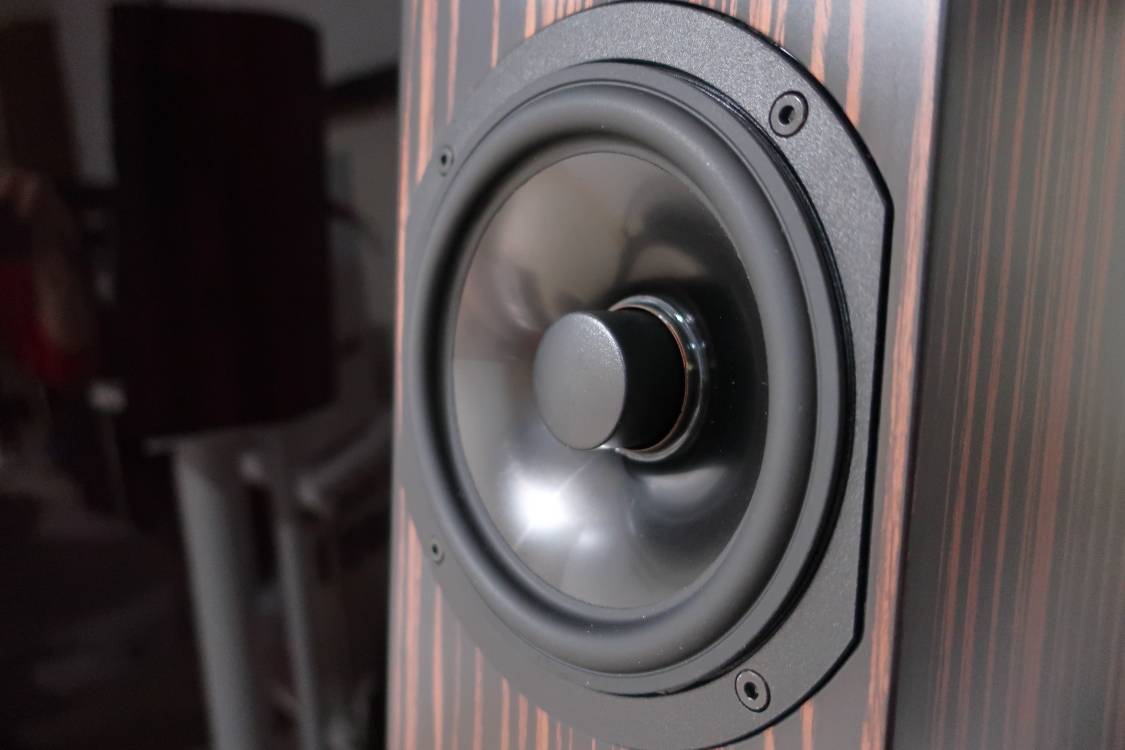
When Izumi Masuda sang in "May you have happiness" ("Golden Lips" | 2009 | ABC Records | HD-121), Step 35 sounded nicely open and focused, just as one roughly imagines the legendary "two-way magic". The mids can be truly holographic, appearing prominent and clear, they have a feeling of enough energy and actually sounded in some combinations even expressively and quite decisively. Nevertheless, they do not incline towards dry technicality, they are excellently clear and fast, which makes them also effortlessly understandable.
The sound of the cymbal in Davis's "So what" from the audiophile master "Live 8" (2015 | ABC Records | HD-207) was very distinct, the cymbal itself was very energetic, clear, and resonant, though not in the sense of any harshness or ringing. In fact, it is presented very nicely, the metal has plenty of subtle shades and a convincing texture, even the sharp bang has lightness, speed, and a lively punch that does not rely on harshness. It is a penetrating sound with perfect control and fine detail, the influence of changing amplification and the character of the specific amplifier can also be heard – an overtly harsh sound of the electronics could be a bit detrimental here.